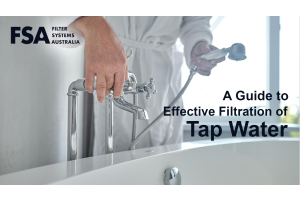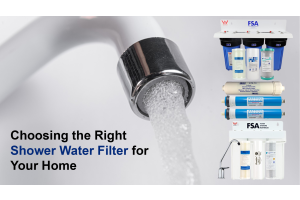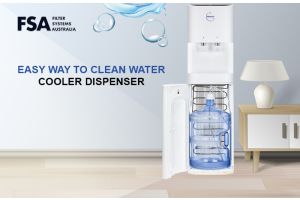
What is an Ultraviolet System?
Ultra Violet Systems produce ultra violet light. The U/V light omits radiation which disrupts the DNA in micro-organisms, killing them outright or harming them so they cannot reproduce. U/V lights also act to halt the reproduction of pathogens, viruses and mould and prevent further colonisation.
When is a U/V System Recommended?
U/V sterilization is recommended when you are using water where there is risk of the above mentioned micro-organisms: pathogens, viruses and mould.
Tank Water, Stored Water and Untreated Water Supplies all pose risk of micro-organisms and bacteria living within them. As a result, it can become a breeding ground for Giardia and Cryptosporidium-water borne disease. These diseases are very common and lead to painful and reoccurring gastrointestinal upsets.
Common symptoms of Giardia include: diarrhoea and abdominal pain, particularly cramping; however, diarrhoea is not invariable and occurs in 60% to 90% of patients.
Other common manifestations include:
Bloating,
Nausea with or without vomiting,
Malaise, and
Fatigue.
On municipal (town water) supplies, chlorine and other similar chemicals are used to control the reproduction of micro-organisms and bacteria. However, it is a growing trend to now replace chemical treatment plants in favour of U/V sterilization. U/V sterilization produces no toxic chemical by-products. It is an entirely physical, chemical-free process.
Do I use anything in conjunction with a U/V System?
 The Answer is yes. U/V Sterilization must be used in conjunction with a Water Filter. The water filter acts to stop dirt, grit and sediment from getting into the U/V chamber. If these materials get into the chamber they may cause a build-up on the quartz sleeve. This build up blocks the light from being omitted out from the quartz sleeve, thus allowing micro-organisms, pathogens and viruses to pass straight through the U/V chamber without any real contact with the U/V light, quite possibly rendering the U/V light ineffective.
The Answer is yes. U/V Sterilization must be used in conjunction with a Water Filter. The water filter acts to stop dirt, grit and sediment from getting into the U/V chamber. If these materials get into the chamber they may cause a build-up on the quartz sleeve. This build up blocks the light from being omitted out from the quartz sleeve, thus allowing micro-organisms, pathogens and viruses to pass straight through the U/V chamber without any real contact with the U/V light, quite possibly rendering the U/V light ineffective.
A minimum of 5 micron filtration should be applied prior to the U/V System. A single 5 micron sediment filter is all that is generally required – you would only opt for a twin system (using a sediment and carbon combination) if you had taste and odour issues in the water, or concerns of chemicals in the water. Considering that the vast majority of U/V systems are used only on tank, creek and river water – chemical extraction is not generally a common concern.
What kind of maintenance is required on UV Systems?
Regularly check the Sediment Pre-Filter to ensure it is still functioning and is not clogged.
Replace the U/V Lamp every 12 months.
When changing the U/V Lamp, check the integrity of the Quartz Sleeve and the O-Rings, taking care to always wear gloves. Clean the Quartz Sleeve if any residual build up is present – following the service manual guidelines at all times.
Replace the Quartz Sleeve and O-Rings every 2 years.
Which model U/V System suits my needs?
We have U/V systems to cater for most domestic needs ranging for undersink/drinking water all the way to semi-commercial systems.
Below are our Best Sellers
Twin Undersink Water Filter + UV Triple Undersink Water Filter + UV


Whole House Twin System + UV 50L/Min Whole House Triple Filter System + UV


30L/Min Ultraviolet System – Suit Small Home Whole House UV System 50L/Min
Contact us for expert guidance by our friendly team on the best water filter solution for your specific needs or request a free personalised home water filter assessment online in just a few minutes.






